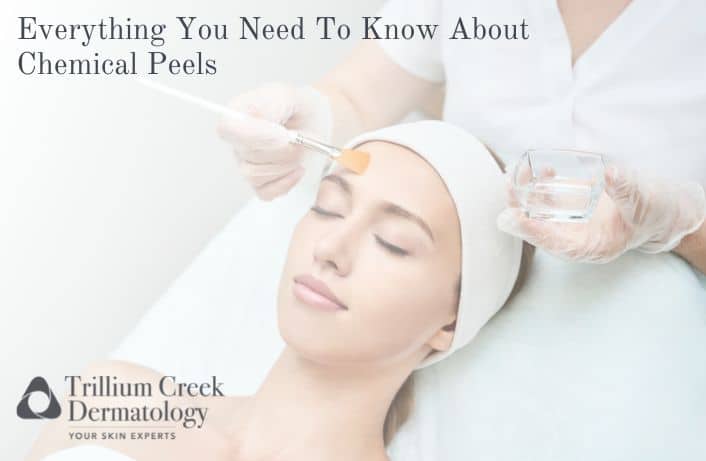
When it comes to skincare, there are a lot of different treatment options available. If you’re looking to give your skin a boost, you may be considering a chemical peel. But what is a chemical peel, and what can you expect from the treatment? Here’s everything you need to know about chemical peels.
What is a Chemical Peel?
A chemical peel is a type of exfoliating treatment that uses chemicals to remove dead skin cells and promote the growth of new, healthy skin. Depending on your desired results, chemical peels can be performed at varying depths. Light peels are often used to treat mild sun damage, while deeper peels may be used to improve the appearance of wrinkles or scars.
Do Chemical Peels Hurt?
You may experience mild discomfort during a chemical peel, but the treatment is generally well-tolerated. Deeper peels may require anesthesia, but most light peels can be performed without.
Most peels heal within a week or two, but deeper peels may take longer to heal. You can expect your skin to peel and flake during this time. Additionally, you can expect your skin to be sensitive following a chemical peel. Protecting your skin from the sun is important, and avoiding using harsh skincare products.
Most peels heal within a week or two, but deeper peels may take longer to heal. You can expect your skin to peel and flake during this time.
How Long Does a Chemical Peel Take?
The length of the chemical peel will depend on the type of peel being performed. Light peels can be done in as little as 30 minutes, while deeper peels may take up to two hours.
What Is the Skincare Treatment Like?
Your skin will be cleansed and prepped for the peel during the treatment. A solution containing chemicals will then be applied to your skin. You may feel a tingling or burning sensation during this part of the treatment. The chemical solution will be left on your skin for a set time before being rinsed.
What Are the Benefits of Chemical Peels?
Chemical peels offer several benefits, including improved texture and tone, reduced wrinkles and fine lines, and improved clarity. Chemical peels can also treat acne scars, hyperpigmentation, and sun damage.
Are There Different Chemical Peels?
AHA peels are typically light peels. Glycolic and lactic acid are two common AHAs used in skincare products and treatments. These are often used to treat mild sun damage, hyperpigmentation, and acne and have a short recovery time.
Like AHAs, BHAs are often used to treat mild sun damage, hyperpigmentation, and acne. However, BHAs are typically used for oilier skin types as they can help to reduce sebum production. Salicylic acid is a common type of BHA. They also have a shorter recovery time than AHAs.
TCA peels are deeper peels that should be performed by a licensed professional. You can also use them to improve the appearance of wrinkles, scars, and hyperpigmentation. TCA peels typically have a longer recovery time than light or medium peels.
Schedule a Consultation
Contact Trillium Creek Dermatology now to set up a free consultation in Brunswick, Medina, Strongsville, Wadsworth, or Wooster, Ohio. We would be delighted to assist you in obtaining your objectives!


